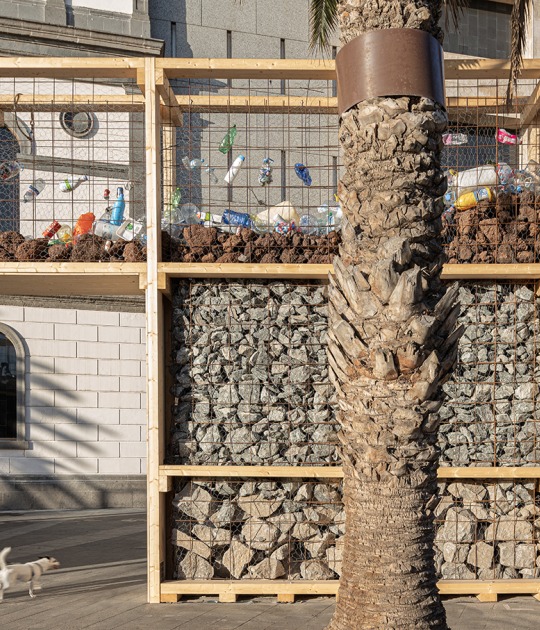In the park where the old moat was located, part of the intervention takes place, placing an educational room on four Corten steel pillars at the foot of an open-air theater. Furthermore, with pavés related in perfect harmony with the concrete of the pre-existing building at the back of the Historia, they develop an extension of the reserves, connecting the new building through a cantilever.
The project is inscribed in the historical landscape, establishing a dialogue of reciprocity between the natural and the built. The use of materials such as Corten steel and glass, respectful of the white and calcareous material of the Historia and at the same time connected to the pre-existing building, give continuity to the complex, appearing to be an extension of what exists.

Chateau de Péronne by Beaudouin Architectes. Photograph by Luc Boegly.
Project description by Beaudouin Architectes
The Historial de Péronne was built by the architect Henri Ciriani in 1992. It is built on the edge of a pond, backed by a medieval castle, built under Philippe Auguste at the beginning of the 13th century. The Historial project is intimately inscribed in its landscape, in a dialogue of reciprocity between the natural and the built. To the west, a path goes around the pond, through the columns of trees, the curved facade of the Historial is reflected in the water, without ostentation.
The large curve in white concrete, which constitutes the main façade, is raised above the water. The white, chalky material of the Historial gives new dignity to the pond by giving it the opportunity to become a mirror. Without Henri Ciriani's building, it would be nothing but a swamp bordering the moat of a ruined fort. The closer you get to the building, the more you feel it cast as a single mass in a powerful and homogeneous material. It rises above the inclined plane of the bank, as if to make us better feel the continuity between its facades and its white concrete underside. The Historial is connected to part of the castle, built in stone and brick. The two circular towers form an impressive porch, giving access to a courtyard of uncertain geometry. We have added a corten steel harrow that slides into the original slot.

Chateau de Péronne by Beaudouin Architectes. Photograph by Luc Boegly.
The thickness of the castle is used for a new ticket office and the rooms of a shop. A roof suspended from a double steel blade enlarges the entrance between the two towers. The roof foundations are placed on top of the castle buried in the ground as a counterweight. The pendulum of the beam is leaning on the stone wall of the castle. The roof of the overhang is also made of corten steel, without sealing, continuously welded like the deck of a boat. The courtyard is redesigned and flattened, a corten steel canopy leans against the brick wall of the castle to mark the entrance to the exhibition rooms.
The corten steel blades, continuously welded to stiffen the planes of the awning, are suspended above the hard ground. They are held by a beam inside the castle, serving as a vertical foundation. This awning is an abstract sculpture brushing against the castle wall, almost without touching it.

Chateau de Péronne by Beaudouin Architectes. Photograph by Schnepp Renou.
In the park, in the old moat, an educational room has been built at the foot of an open-air theatre. The structure of this room is supported on four corten steel posts, beams made of simple steel blades are supported and extended to anchor themselves in the thickness of the castle wall. The pillars being outside, the room itself is freed from any supporting structure.
An extension of the reserves is built behind the Historial. It is a glass brick volume with a corbelling protecting the delivery space. A glass brick gallery connects the new building to the Historial.
















































































































